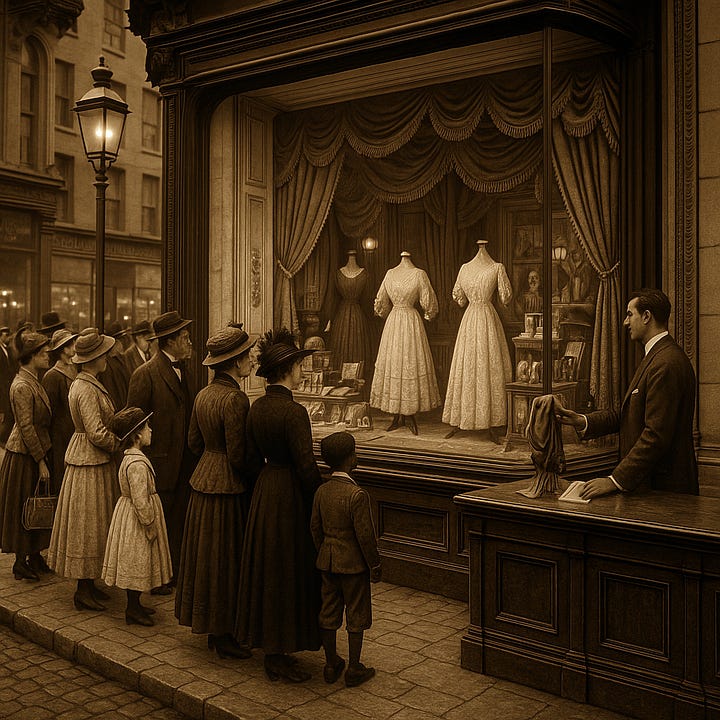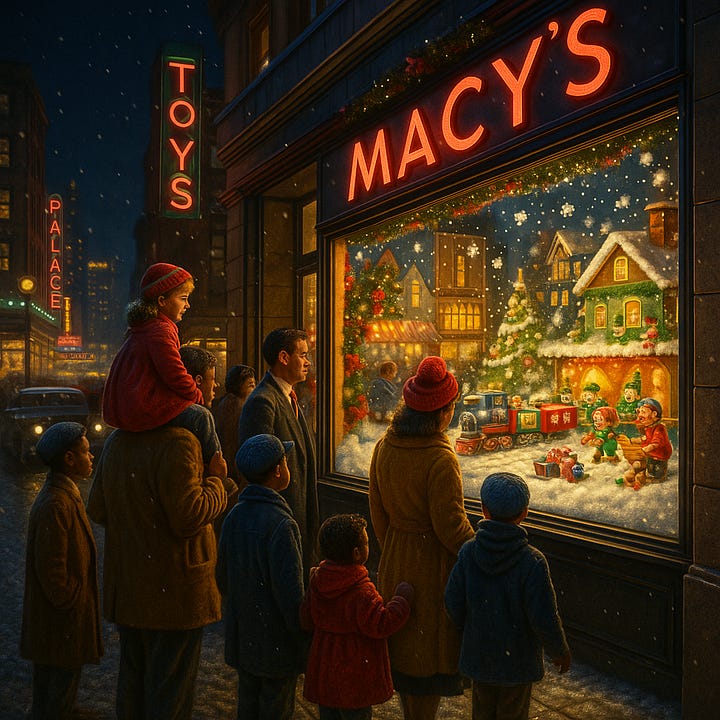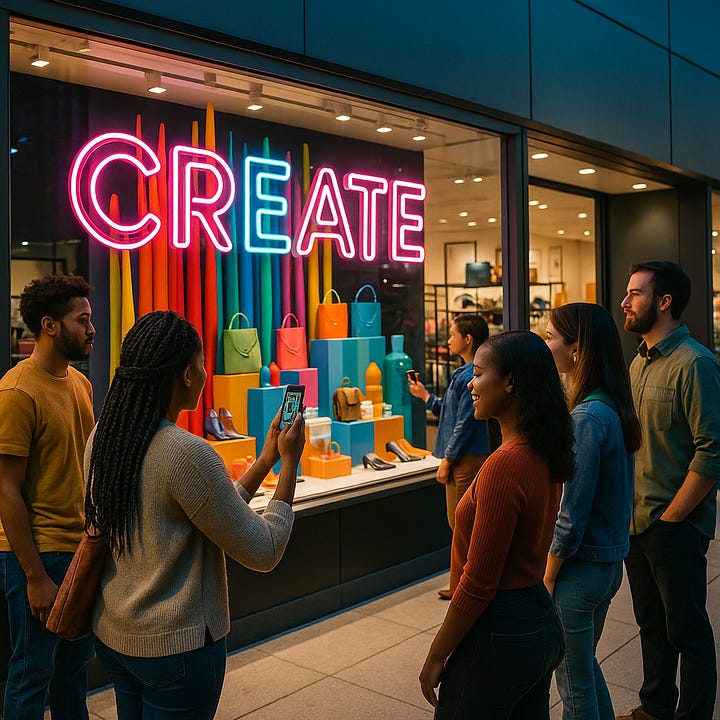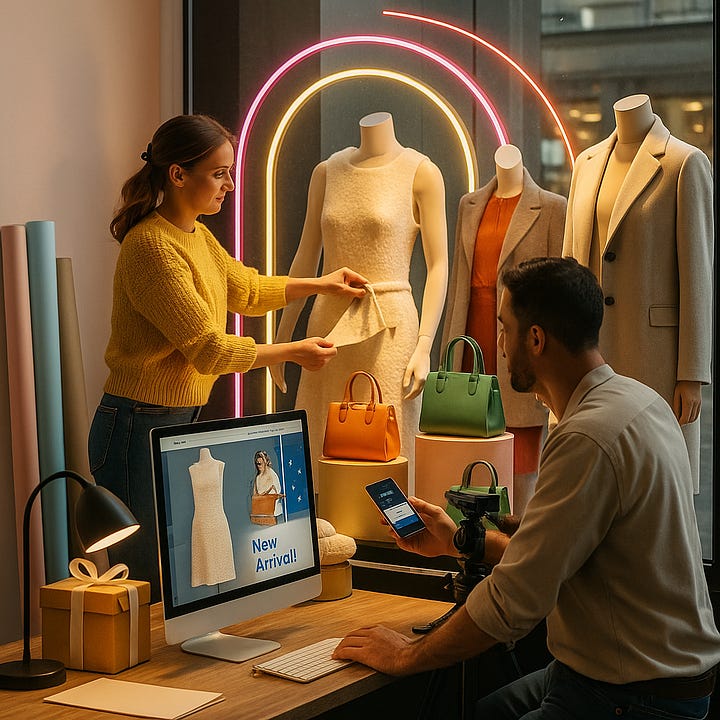🏷️ Retail’s Original Influencer: The Window Dresser
Before followers and likes, there were glass panes and creativity; retail’s first storytellers shaped desire from the street.
Before Instagram and TikTok, before hashtags and brand collaborations, retail’s influencers stood not on a digital platform but behind a pane of glass.
They were the window dressers - the unsung artists who transformed sidewalks into runways and routine errands into moments of wonder. Their work did what social media does now:
Stopped people in their tracks, sparked curiosity, and inspired action.




🎨 Where Did It Begin?
The art of window dressing flourished in the late 1800s, as urbanization brought department stores to the world’s great cities. New York’s Macy’s, Paris’s Printemps, and London’s Selfridges saw windows as more than architectural necessity - they were canvases.
L. Frank Baum - better known as the author of The Wizard of Oz - published the Show Window journal in 1897 and even invented the title “window trimmer.” Baum helped elevate window dressing to a creative profession, with its own trade shows and best practices.
By the early 1900s, store windows became true spectacles. Macy’s Christmas displays in Manhattan drew crowds that stretched for blocks. Printemps staged moving scenes and thematic displays that blurred the line between art and commerce. Selfridges famously unveiled windows at night, turning them into citywide events.
🌟 Why Did It Matter?
Window dressers were early masters of retail theater.
They understood the psychology of desire and anticipation.
A well-dressed window did more than show off merchandise - it told a story, reflected the cultural mood, and even shaped public taste.
During the Great Depression, many stores invested in fantastical windows to lift spirits and boost foot traffic, giving shoppers “dreams to buy into” during tough times.
At holiday seasons, displays became community rituals - an event that brought families together and filled newspapers with front-page coverage.
Legendary window dressers, such as Gene Moore at Tiffany & Co., treated each display as a miniature art installation, collaborating with world-class artists and designers. Their influence extended beyond retail, setting visual trends and inspiring generations of creatives.
🎄 The Magic and Impact of Christmas Windows
If window dressing is retail’s oldest influencer campaign, then the holiday window is its annual blockbuster.
Macy’s, Saks Fifth Avenue, Marshall Field’s, and other flagship stores have turned Christmas windows into both tradition and pilgrimage. By the 1920s and 1930s, stores realized their windows weren’t just for selling - they were for storytelling. Elaborate Christmas displays - animated trains, snow-dusted villages, and toy workshops - brought entire families downtown, turning shopping into a seasonal outing.
During the Great Depression, these windows offered escapism and hope. Even those who couldn’t afford to shop could marvel at intricate dioramas and sparkling scenes.
In the postwar era, stores began to unveil new windows with special ceremonies.
People traveled by train and bus just to catch the big reveal. Newspapers ran photo spreads. Local TV broadcast the first look. At its height, stores like Macy’s and Lord & Taylor drew over a million visitors each holiday season - often queuing around the block, bundled against the cold, to press their faces to the glass.
For generations, seeing the Christmas windows became a rite of passage - a shared civic experience blending nostalgia, family, and commerce. Even today, the unveiling of these windows remains a key cultural moment for New York, Chicago, Paris, and London.
It’s not just local: tourists from around the world build their holiday travel around the spectacle of retail’s most magical season.
The Christmas window reminds us:
When retail creates awe, people come together—sometimes, for nothing more than the joy of looking.
🔄 How Did It Evolve?
The craft of window dressing transformed alongside retail itself.
Mid-century modernism in the 1950s–60s brought minimalism, bold color, and geometric shapes to windows - stripping away clutter and focusing on emotional impact.
Luxury brands like Bergdorf Goodman turned window displays into art galleries, commissioning avant-garde artists to reinterpret their identity for the street.
In the 1980s–90s, technology enabled kinetic displays, animated props, and dazzling light shows - turning department store facades into urban destinations.
As foot traffic shifted to malls and, later, digital platforms, window dressing didn’t disappear - it evolved.
Today, visual merchandising teams curate every touchpoint:
Storefront windows
In-store displays
Pop-up installations
Flagship “Instagrammable moments” designed for social sharing
And as retail moves online, the tradition lives on through digital window dressing:
Social media “shop the look” feeds
Curated homepage carousels
Influencer product drops styled for the scroll, not the sidewalk
🪟 The Echo Today
Every modern visual merchandiser, social media manager, and digital content creator stands on the shoulders of these early influencers.
Anthropologie and Apple build flagship window displays that trend on social media as often as they pull in foot traffic.
Bergdorf Goodman’s holiday windows are as likely to be livestreamed on Instagram as they are to appear in the New York Times.
Small brands use creative pop-up windows and local collaborations to turn city streets into interactive storytelling spaces.
Today’s influencers haven’t invented visual persuasion - they’ve digitized and democratized it.
🕊️ What’s the Lesson?
Retail storytelling started with a simple truth:
We buy with our eyes - and with our imaginations.
Great window dressers shaped not only what we wanted, but how we wanted.
Their influence lives on in every creative campaign, every social trend, every viral “storefront moment.”
Because, in retail as in life, we’re still moved by a story well told - even if it’s told through glass, a screen, or a scroll.
🕰️ Echoes of Commerce




